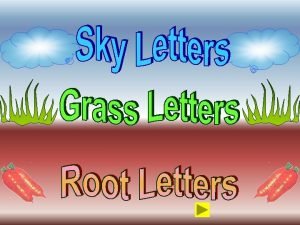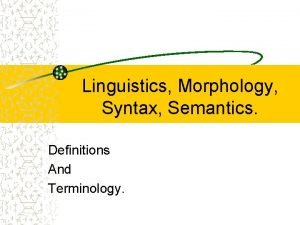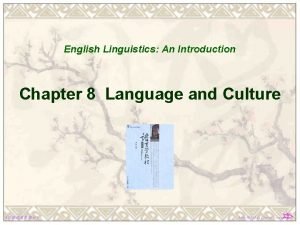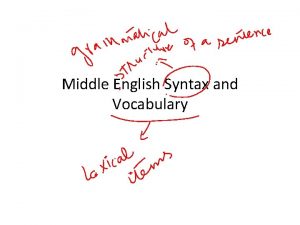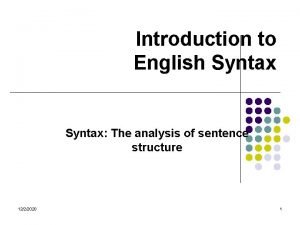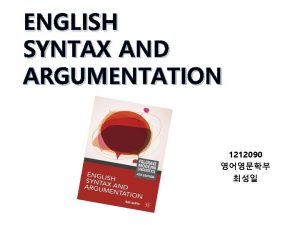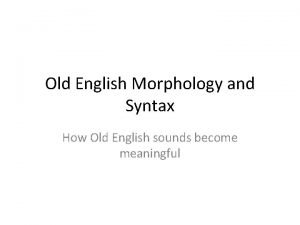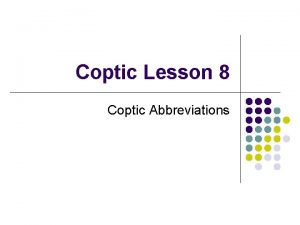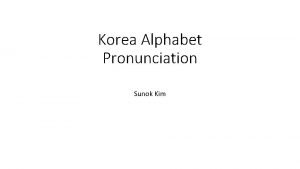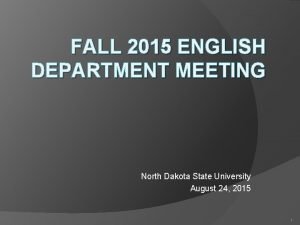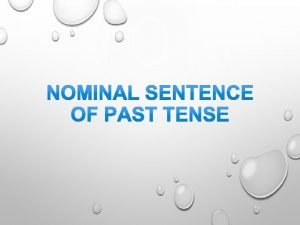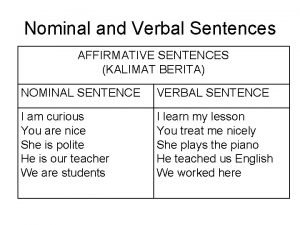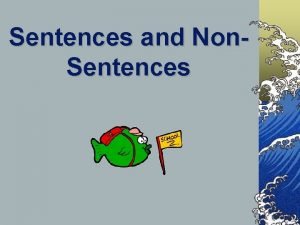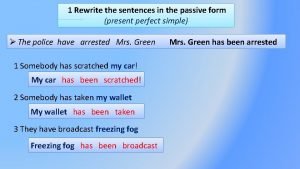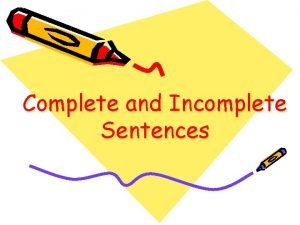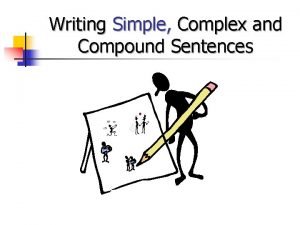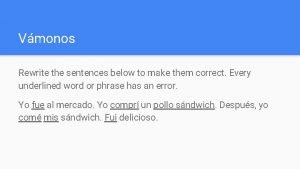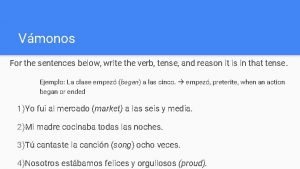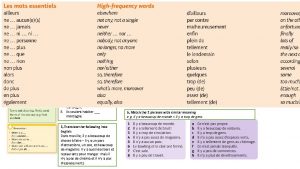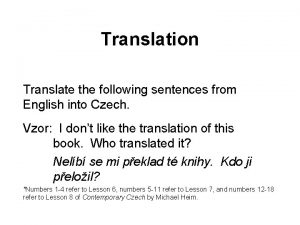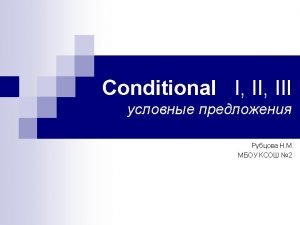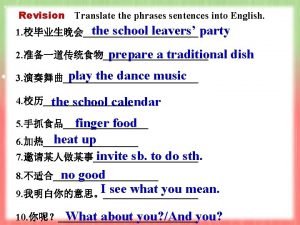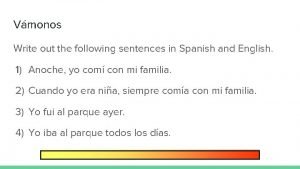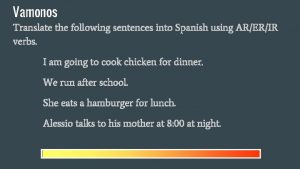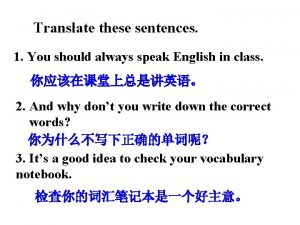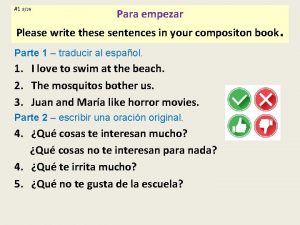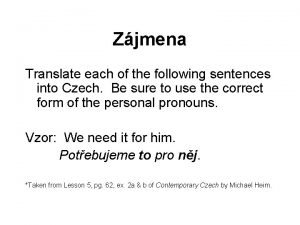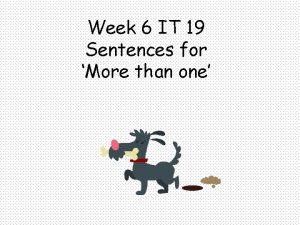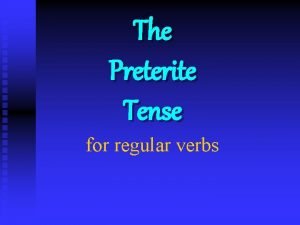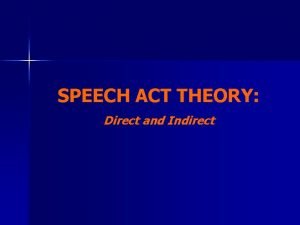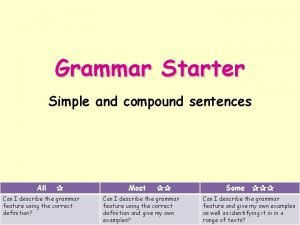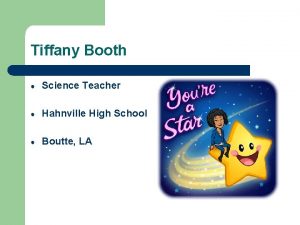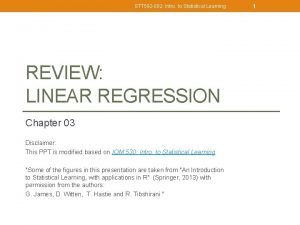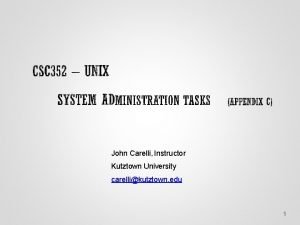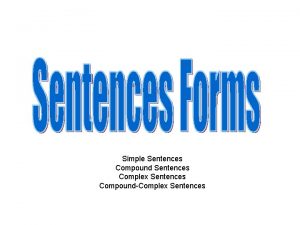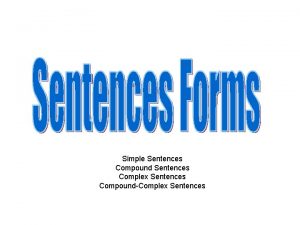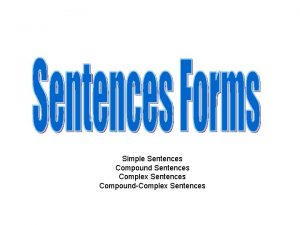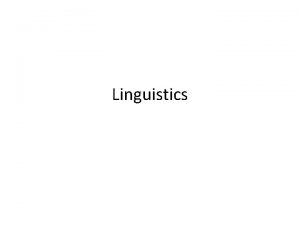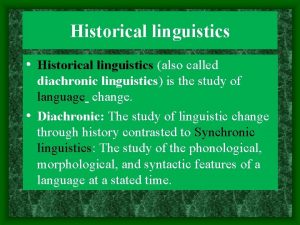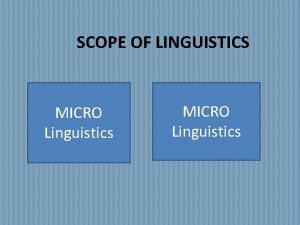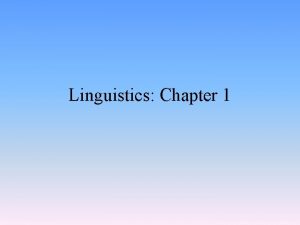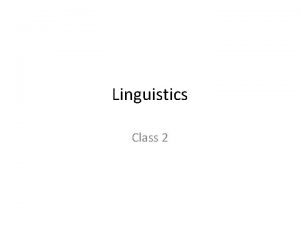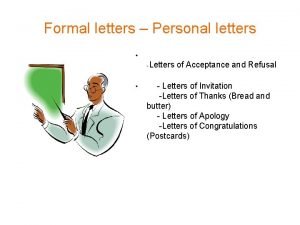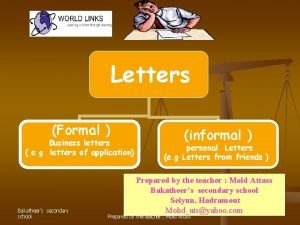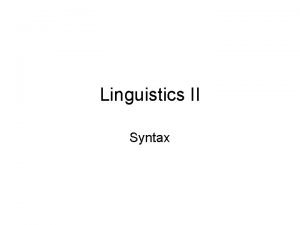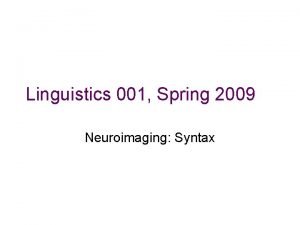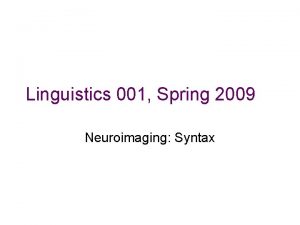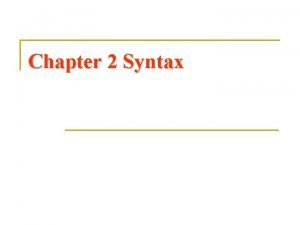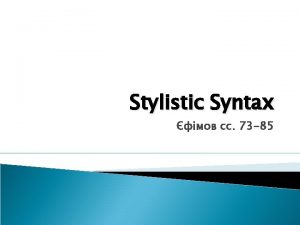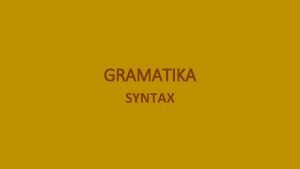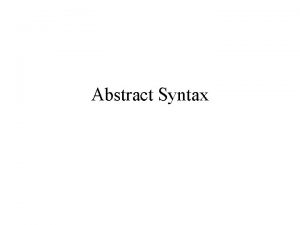SYNTAX ENGLISH DEPARTMENT FACULTY OF LETTERS Sentences Linguistics




























![Back to recursion • [Mary helped George]. (A sentence) • [Cathy knew] that [Mary Back to recursion • [Mary helped George]. (A sentence) • [Cathy knew] that [Mary](https://slidetodoc.com/presentation_image_h2/a3f8ee00daea9c5c4834d0ce25fcf6a1/image-29.jpg)







































![• Deep Structure [the house was old] fell down] • • relative transformation • Deep Structure [the house was old] fell down] • • relative transformation](https://slidetodoc.com/presentation_image_h2/a3f8ee00daea9c5c4834d0ce25fcf6a1/image-69.jpg)

- Slides: 70

SYNTAX ENGLISH DEPARTMENT FACULTY OF LETTERS Sentences?

Linguistics Levels

References: • Jong-Bok Kim and Peter Sells, English Syntax: An Introduction, November 20, 2007 • Radford, Andrew, English Syntax: An Introduction, UK: Cambridge University Press, 2001 • Fromkin, Victoria, An Introduction to Language, ninth edition, US: Wadsworth Cengage Learning. 2009

SYNTAX (1)the study of the rules that govern the ways in which words combine to form phrases, clauses, and sentences (2)"Syntax is the study of the principles and processes by which sentences are constructed in particular languages

• (3) The arrangement of words in a sentence. Adjective: syntactic. • A sentence is a grammatical unit that is composed of one or more clauses. • Etymology: From the Greek, "arrange together"


Noam Chomsky • It’s part of Linguistics • It’s part of the grammar of every language • And the grammar of a language is part of a native speaker’s linguistic knowledge

UNIVERSAL GRAMMAR • Theory of Chomsky • UG has Principles, true of all languages – All languages have the same underlying structure • e. g. all languages have nouns and verbs • and Parameters, whose setting varies from language to language – English and Chinese SVO; Japanese SOV

Phrase structure rules • Some words seem to belong together: – {The crazy man} {is jumping off the bridge} • Groups of words that belong together are called constituents • The component that determines the properties of the constituent is the head, and the constituent can be referred to as a phrase: e. g. noun phrase

NP • If we look at phrases, some patterns emerge: Det N • the instructor = NP Det N • a friend = NP Det N • some homework = NP Det N • two classes = NP

VP VP V sang VP VP V ate NP Det V N NP sang Det badly the cake a song the shower in Det N PP N P Adv NP

Hierarchy • Another way to look at “hierarchies”: construction and constituents • The young must respect the old people. (A) the young (B) must respect the old people (C) the (D) young (E) must respect (G) must (H) respect (I) the (F) the old people (J) old people (K) old (L) people

Clauses Clause Types: • S+V (The dog + is running) • S+V+O (The dog + bites + him) • S+V+C (The car + is + ready) • S+V+A • S+V+O+O (I + give + him + a pen) • S+V+O+C (He + calls + John a fool) • S+V+O+A (Mary + saw + John +yesterday) • Note: subject (S), verb (V), complement (C), object (O), adverbial (A). (The picture + lays +on the ground)

1. Tree Diagrams (1) “The girl chased the dog. ” (Crystal 96) The girl chased the dog a. Identify the 2 major constituents (The girl + chased the dog) b. Divide the next-biggest constituent into 2: chased + the dog c. Continue dividing constituents into 2 units until we can go no further. e. g. the + girl, the + dog, chase + -ed

1. Tree Diagrams (2) • Tree Diagrams: Different levels in analysis • The tree diagram format may be viewed as: a. A static representation of the structure of the sentence at the bottom of the diagram. b. A dynamic format, representing a way of “generating” a very large number of sentences with similar structures (by the use of phrase structure rules).

Phrase Structure S NP ART VP N V NP (DET) ART the girl chased the N dog

Phrase Structure Rules • Phrase structure rules (Nash 75 -77): present the information of the tree diagram in an alternative format S NP + VP VP V + (NP) + (PP) + (ADV) (ART) + (ADJ)* N NP PRO PP P + NP • Note: see Yule 105 for symbols and abbreviation definition.

Example The children put the toy in the box S NP Det VP N V NP Det The children put the PP N toy P in NP Det N the box 18

Example 19

Deep and Surface Structure • The deep structure is an abstract level of structural organization in which all the elements determining structural interpretation are represented. – Sentences that have alternative interpretations – Sentences that have different surface forms but have the same underlying meaning. • Surface structure= how the sentence is actually represented

• Deep structure and surface structure refer • respectively to the abstract structure and to the actually produced structure. (wardaugh, 118) • VP be + adj • Vi + Adv • Recursion: a set that permits an infinite expansion

Deep and surface structure • How superficially different sentences are closely related? – – Charlie broke the window. The window was broken by Charlie who broke the window. Was the window broken by Charlie? Ø Difference in their surface structure = difference in syntactic forms Ø BUT they have the same ‘deep’ or underlying structure

Structural Ambiguity • How superficially similar sentences are different? (multiple meanings) • E. g. Annie whacked the man with an umbrella • Same surface structure but different deep structure – The boy saw the man with a telescope • The question is: What is the scope of "with the telescope"? Does it modify only "the man" or does it modify "saw the man"?

Structural Ambiguity (1) The boy saw the man with the telescope S NP Det VP N NP V Det N PP P NP Det The boy saw the N man with the telescope Meaning: The boy saw the man. The man had a telescope. 24

Structural Ambiguity (2) The boy saw the man with the telescope S NP Det VP N V NP Det PP N P NP Det The boy saw the N man with the telescope Meaning: Using the telescope, the boy saw the man 25

Recursion • Rules can be applied more than once in generating sentences • E. g. repeat prepositional phrase more than once – The gun was on the table near the window in the bedroom in the pink house • Put sentences inside sentences – This is the cat that ate the rat that ate the cheese that was sold by the man that lived in the city that was on the river… • No end to recursion- produce longer complex sentences 26

Recursion • Some phrasal categories may appear to the left or right of the arrow NP (Det) N (PP) PP P (NP) • Recursion: the property of language that allows for the embedding of categories (which can yield infinitely long phrases)

the cat on the mat in the house on the street NP Det N the cat PP P NP on Det N PP the mat P NP in Det N the house PP P on NP Det N the street
![Back to recursion Mary helped George A sentence Cathy knew that Mary Back to recursion • [Mary helped George]. (A sentence) • [Cathy knew] that [Mary](https://slidetodoc.com/presentation_image_h2/a3f8ee00daea9c5c4834d0ce25fcf6a1/image-29.jpg)
Back to recursion • [Mary helped George]. (A sentence) • [Cathy knew] that [Mary helped George]. (a sentence within a sentence) • [John believed] that [Cathy knew] that [Mary helped George]. • The word that introduces the complement phrase 29

3. Recursiveness (Recursion) • Recursive rule: VP VS (Yule 107) e. g. : John said [ Cathy thought (Mary helped George)]. • Another e. g. of recursiveness The Rose in My Garden This is the rose in my garden. This is the bee that sleeps on the rose in my garden. These are the holly hocks high above ground, that give shade to the bee that sleeps on the rose in my garden.

Complement Phrases • Cathy knew that Mary helped George • That = complementizer (C) introducing complement phrase (CP) • The CP comes after the VP • S NP VP • VP V CP • CP CS 31

Complement Phrases 32

Transformational-generative grammar • Transformations: processes that change the deep structure into surface structure. • Generative: using phrase structure rules, se can produce (generate) infinite sentences. • Surface Structure: S NP VP V NP eat the ART N chou tofu

TRANSFORMATIONAL GRAMMAR MODEL OF LANGUAGE Phrase structure Lexical component Deep structure Transformations Surface structure Morphophonemic rules

Deep and Surface Structure • Deep and surface structure: “the form of a sentence we produce and understand is very often not the same as the basic form which shows its meaning” (Nash 79) A. Deep Structure: the abstract, underlying level, but basic form of the sentence B. Surface Structure: the superficial, syntactic form tha we produce in reality e. g. old men and women e. g. Annie whacked a man with an umbrella. (Yule 103) same surface structure form, two underlying interpretation (deep structures) Other examples: 1. Help yourself. 2. The runner broke the world record.

• Deep Structure: S NP VP pro V imperative transformation NP ART you eat the N chou tofu

• Surface structure: Help yourself! • Deep Structure: S NP pro S VP V NP reflexive transformation NP VP pro you help you V NP (reflexive pro) you help yoursel

S NP VP Pro V NP imperative transformation (reflexive pro) You help yourself Help yourself

Transformational Rules • Phrase structure rules represent ‘deep’ structure- always generate structures with fixed word order. • Mary saw George recently Recently Mary saw George • Transformational rules= take a specific part and attach it in another place • You will help Cathy • Will you help Cathy? 39

Transformational Rules 40

PARAPHRASE & AMBIGUITY • Paraphrase • Ambiguity • When several surface structures relate to one deep structure. • One surface structure relating to several deep structures. 1. John bought the book from Mary. • Flying planes can be dangerous. 2. Mary sold the book to John. 1. To fly planes. 3. The book was sold to John by Mary. 2. Planes which are flying.

Language Ambiguity 1. Sentence Ambiguity: e. g. : Visiting relatives can be a nuisance. 2. Word Ambiguity: e. g. : The man put his straw on the floor.

Exercises • Draw a labeled tree diagram for the following English phrases. (Hint: what part of speech is the leader for the phrase? ) a. ancient pyramids b. in the early evening c. Drove a car 43

Exercises • Draw phrase structure trees for the following sentences: – The puppy found the child – The ice melted – The hot sun melted the ice. – The house on the hill collapsed in the wind. – The boat sailed up the river. – A girl laughed at the monkey. 44

• Domination – phrases can dominate words in a sentence tree. But how do we know which phrases dominate what? A tree has a hierarchical structure, which means that a node or label dominates all that is below it.


• We can see here that phrase A dominates phrase B and ‘in’. We know this because phrase A is above phrase B and it is above the word ‘in’. When a phrase is directly above something, we call this immediate domination. Phrase A immediately dominates phrase B and ‘in’, but it does not immediately dominate ‘the’ or ‘car’.

The Grammatical Roles in Word Order • functions to distinguish the grammatical and semantic roles of sentence constituents. • Grammatical roles include subject, verb, object, complement, & adverbial. • Semantic roles include agent, action, goal, beneficiary, instrument, location, and more.

The Grammatical Roles in Word Order • Word order helps us understand the grammatical function of each constituent. • Subjects in English for example are usually at the beginning of the clause. • John left yesterday after he gave his lecture. • Objects in English occur after the verb. • “Close the door, ” she yelled, kicking it shut.

The Semantic Roles in Word Order • Constituents also serve semantic roles in sentences, such as agent, action, goal, instrument, location and many more. • John opened the door agent action goal with a key. instrument • subject verb object adverbial In most cases, grammatical & semantic role overlap, but not always.

Function Words & Syntax • Function words are minor word classes. • In English, those are prepositions, pronouns, articles, and conjunctions. • These function words provide valuable grammatical information: how easily can you read the following text for example?

Examples of Function Words • Was walking front door, dropping bags going. • It was me -- walking out of my front door, dropping my bags and going back in. (O. J. ) • Function words provide important information about the grammatical & semantic roles played by the constituents in a sentence.

Major word classes • English uses grammatical inflections to provide different kinds of grammatical information on the major word classes -nouns, verbs, adjectives, and adverbs.

Grammatical Inflections in Nouns • English uses the grammatical morphemes to mark case • This is John’s book, • number • He owns several rare books, • and gender • Adrienne Rich hates being called a poetess.

Grammatical Inflections in Verbs • English uses grammatical morphemes to mark • tense Liz walked with her sister. • aspect Liz has helped her often. • voice Liz was pleased by her cleverness. • modality Liz must be smarter than Dad.

Grammatical Inflections in Adjectives & Adverbs • English uses grammatical morphemes on adjectives and adverbs to mark • grammatical function • Ingenious Liz can do this easily. • comparison (degree) • Liz is smarter than her father. She learns faster than he does.

CONSTITUENT and CONSTRUCTION • A constituent is any word or construction that enters into some larger construction. • An immediate constituent is any one of the largest grammatical units that constitute a construction. Immediate constituents are often further reducible. In the complex noun phrase (CONSTRUCTION) the dog that killed the cat, each of the following items are immediate constituents: • the • dog • that killed the cat

• An ultimate constituent is one of the grammatically irreducible units that constitutes a construction. In the construction the dog that killed the cat, the following are ultimate constituents: • the • dog • that • kill • -ed • the • cat • A construction is an ordered arrangement of grammatical units forming a larger unit.

• immediate constituent analysis, also called Ic Analysis, in linguistics, a system of grammatical analysis that divides sentences into successive layers, or constituents, until, in the final layer, each constituent consists of only a word or meaningful part of a word.

• In the sentence “The old man ran away, ” the first division into immediate constituents would be between “the old man” and “ran away. ” The immediate constituents of “the old man” are “the” and “old man. ” At the next level “old man” is divided into “old” and “man. ” The term was introduced by the United States linguist Leonard Bloomfield in 1933,

• The sentence You eat bananas contains the following constituents: • Immediate constituents – you – eat bananas • Ultimate constituents – – you eat banana -s

CONSTRUCTION TYPES 1. MODIFICATION H (Head) – M (Modifier) - old ( M) – man (H) - runs slowly - stood at the back - slowly, he stood up - he left because he was left

2. PREDICATION a structure of predication contains Subject (Sb) and predicate (P) - John sang - The old man cultivated the garden - The man who came left early

3. Complementation A structure of complementation contains a verbal (V) and a complement (C). - Peter kissed Mary - John is clever - John is a student - I want to go

4. Subordination A structure of coordication contains a subordinator (Sub) – prep, particle, subordinating conj (in, over, to, after, because, etc) and a dependent unit (D) - Mary stood at the back - I want to go - She cried when she fell down

5. Coordination it contains a marker or coordinator (Co) and two or more independent units (I) – words, phrases, or clauses. - Jokowi and Prabowo - Peter, Paul and Mary - Jack sings and Peter dances

• Show the hierarchies of constructions of the following sentence: • Peter and Susan bought an old house last year. S Sb P etc

Deep and Surface Structure • The term deep structure and surface structure refers to Abstract structure and to the actually produced structure. • Example: The old house fell down S • • The house • fell down The house was old
![Deep Structure the house was old fell down relative transformation • Deep Structure [the house was old] fell down] • • relative transformation](https://slidetodoc.com/presentation_image_h2/a3f8ee00daea9c5c4834d0ce25fcf6a1/image-69.jpg)
• Deep Structure [the house was old] fell down] • • relative transformation [the house [which was old] fell down] relative pronoun – deletion [the house [was old] fell down] be – deletion [the house [old] fell down] adj movement • Surface Structure [The old house fell down]

http: //www. ling-phil. ox. ac. uk/bib_morphology
 Grass root sky letters
Grass root sky letters Traditional linguistics and modern linguistics
Traditional linguistics and modern linguistics Relationship between linguistics and applied linguistics
Relationship between linguistics and applied linguistics Morphology definition linguistics examples
Morphology definition linguistics examples Syntax directed translation
Syntax directed translation Nit calicut chemistry department
Nit calicut chemistry department Cross cultural communication
Cross cultural communication A concise introduction to linguistics
A concise introduction to linguistics Adverbial modifier
Adverbial modifier Syntax analysis english
Syntax analysis english English syntax and argumentation answer pdf
English syntax and argumentation answer pdf Early modern english syntax
Early modern english syntax Old english morphology
Old english morphology Distinguishing between sounds and letters
Distinguishing between sounds and letters Middle english letters
Middle english letters Coptic alphabet song
Coptic alphabet song Korean letters with pronunciation
Korean letters with pronunciation Iup orientation
Iup orientation Swot analysis of english department
Swot analysis of english department Royal holloway english department
Royal holloway english department Ndsu english department
Ndsu english department Write three positive sentences of nominal sentences
Write three positive sentences of nominal sentences Sentence nominal
Sentence nominal Non sentences
Non sentences Rewrite the sentences using passive voice
Rewrite the sentences using passive voice Incomplete sentence example
Incomplete sentence example The cat crept through the dark house
The cat crept through the dark house Rewrite the wrong sentences
Rewrite the wrong sentences Write each of the two sentences below as one sentences
Write each of the two sentences below as one sentences Translate the following sentences into english
Translate the following sentences into english 1translate
1translate Translate
Translate Translate the following sentences in english
Translate the following sentences in english Translate these sentences into english
Translate these sentences into english Translate the following sentences into spanish
Translate the following sentences into spanish Translate the phrases
Translate the phrases Write in english the following sentences
Write in english the following sentences Translate the sentences into spanish
Translate the sentences into spanish Translate
Translate Translate the following sentences into spanish
Translate the following sentences into spanish Write these sentences
Write these sentences Dot translate
Dot translate Sentence climb
Sentence climb Yìzhí
Yìzhí Navegar preterite
Navegar preterite What is sentence and its types
What is sentence and its types Simple sentence with as
Simple sentence with as Herszon kherson maritime college of merchant marine fleet
Herszon kherson maritime college of merchant marine fleet University of bridgeport computer science
University of bridgeport computer science University of bridgeport computer science
University of bridgeport computer science Alamo colleges salary schedule
Alamo colleges salary schedule Hahnville high school faculty
Hahnville high school faculty Importance of faculty in higher education
Importance of faculty in higher education Hubert kairuki memorial university faculty of medicine
Hubert kairuki memorial university faculty of medicine 002
002 Hyperparathyreosis
Hyperparathyreosis Penn state neurosurgery
Penn state neurosurgery Mercy college adjunct positions
Mercy college adjunct positions Faculty of medicine nursing and health sciences
Faculty of medicine nursing and health sciences Lee kong chian faculty of engineering and science
Lee kong chian faculty of engineering and science Applied medical sciences
Applied medical sciences Carelli
Carelli Computer science fsu
Computer science fsu Faculty of business and economics mendel university in brno
Faculty of business and economics mendel university in brno Umd ee
Umd ee Factors influencing faculty staff relationship
Factors influencing faculty staff relationship Czech technical university in prague civil engineering
Czech technical university in prague civil engineering Ecu faculty manual
Ecu faculty manual Benha faculty of engineering
Benha faculty of engineering Singularity executive program
Singularity executive program Faculty of law maastricht
Faculty of law maastricht
